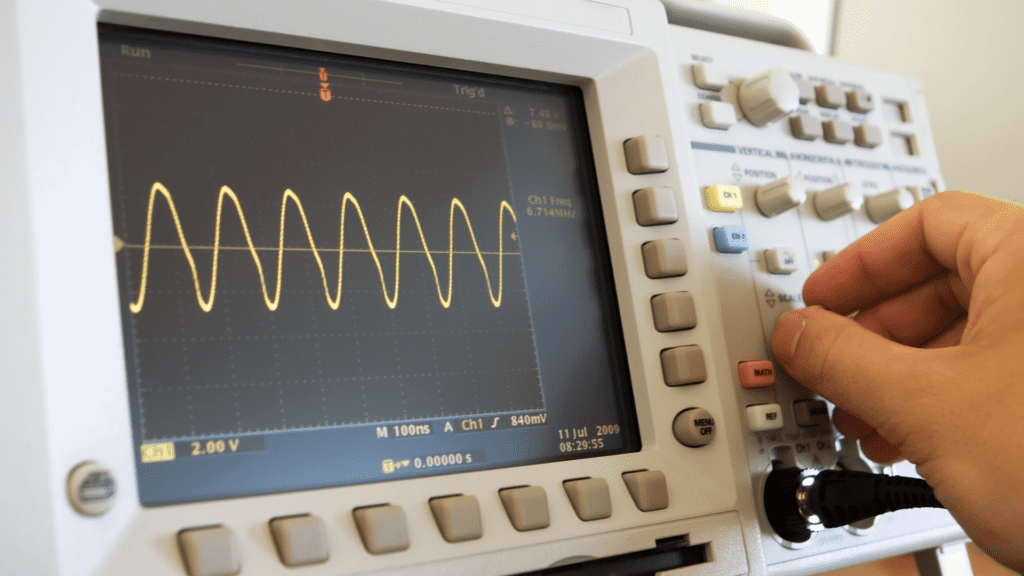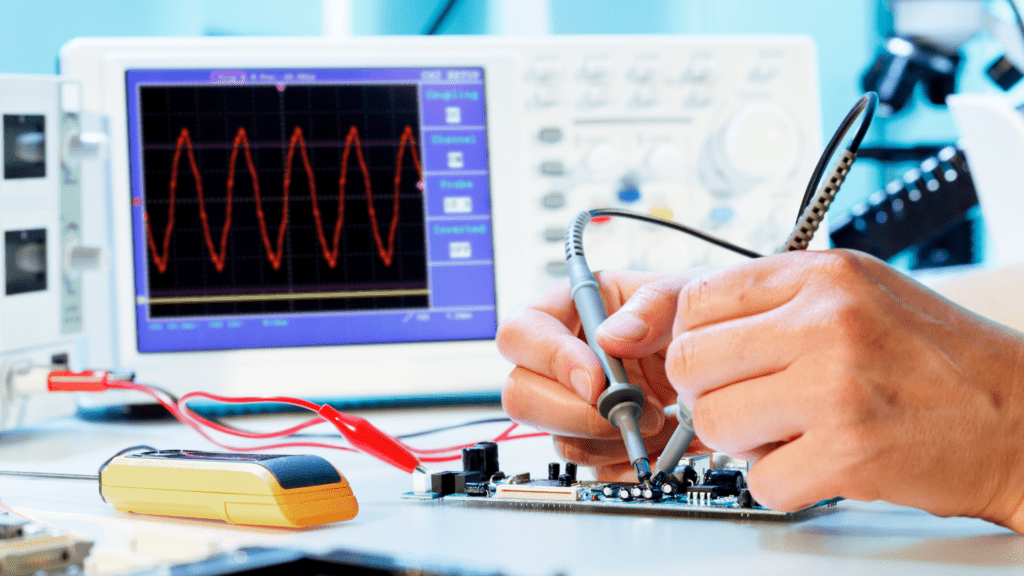
How to calibrate an oscilloscope: step by step guide
Content
An oscilloscope is an important electronic instrument used in different fields for different purposes.
While the purpose of an oscilloscope is limited to measuring electrical signals and studying how signals change over time, the instrument is also handy when troubleshooting electrical circuits.
However, the result you get with an oscilloscope depends on how well it is calibrated. A well-calibrated oscilloscope gives accurate results you can rely on, while a poorly calibrated instrument will distort your results.
Therefore, you want to calibrate the oscilloscope. However, the main problem is how to calibrate the oscilloscope.
This article provides a step-by-step guide to calibrating an oscilloscope.
What is calibration?
Calibration is usually a comparison of two measuring devices. In calibration, one device provides the measurement standard and the other device must conform to the provided standard.
Calibration checks the difference in the measurement results of two measuring devices and ensures that the less correct of the two devices meets the reference standard provided by the correct one. This process is aimed at improving the accuracy of the instruments, which gives accurate results during examinations.
Typical commercial calibration is performed using reference standards and manufacturer's procedures. The standard is usually at least four times more accurate than the calibrated instrument.
Therefore, the use of a new instrument gives the same results as other precision instruments, provided they are used under the same conditions.
For oscilloscopes, oscilloscope calibration is the process of adjusting the oscilloscope to obtain results within an acceptable range.

How to calibrate an oscilloscope
While oscilloscopes come in many different types and models, and the best calibration process for different oscilloscopes varies, this general guide will tell you how to complete the process.
By reading your oscilloscope's instruction manual, you will also learn more about calibrating your particular instrument.
Here are the general steps to calibrate an oscilloscope:
- Set all controls to normal
Check all controls and set them to normal position. Although this setting varies by oscilloscope type, most oscilloscopes require you to center all spinning dials and extend all buttons.
- Turn on the oscilloscope
If you have an old fashioned CRT, give it a few minutes to warm up.
- Set the VOLTS/DIV control to the settings you want.
Although you can choose the desired value for the VOLTS/DIV parameter, it is usually best to set it to 1 for calibration purposes. Setting it to 1 allows the oscilloscope to display one volt per division vertically.
- Set TIME/DIV to lowest value
This setting, typically 1 ms, gives the oscilloscope a horizontal division to represent the time interval. Follow this by turning the dial one notch at a time, gradually changing the dot to a solid line.
- Turn the trigger switch to the "Auto" position.
This makes it easy to observe the waveform on the screen. Auto Trigger helps to establish a common trigger point on the waveform to stabilize the trace. Without this, the signal drifts and is difficult to observe.
- Connect an oscilloscope to the input signal
When calibrating an oscilloscope, it is important to connect it to the input signal. Start by connecting the probe to the instrument. If you have multiple input jacks, connect the sensor to the jack labeled A.
Oscilloscopes usually have an input probe and a ground wire/clamp. The input probe is usually connected to the input signal, and the ground wire is connected to any ground point in the circuit.
- Connect the probe to the oscilloscope's calibration connector.
This will provide the square wave sampling needed to calibrate your instrument. Some oscilloscopes have two terminals, usually 0.2V and 2V. If your instrument has two terminals, use 2V for this purpose.
Placing the probe on the calibration terminal can be difficult, especially if it has a pointed end. Although the alligator clip test probe is easy to place on the calibration terminal, you may not understand how to use the pointed probe.
Place the pointed probe on the terminal by pushing the tip through the small hole at the end of the calibration terminal.
You want to ask if it is necessary to connect a ground wire. When using the oscilloscope in an electrical circuit, it is important to connect the oscilloscope ground to a ground source connected to ground. This is to prevent the risk of electric shock and damage to the circuit.
However, a ground wire connection is not required for calibration purposes.
- Set up a wave
If the displayed square wave does not fit on the screen, you can always adjust it using the TIME/DIV and VOLTS/DIV controls.
Other useful controls include Y-POS and X-POS controls. While the Y-POS control helps center the curve horizontally, X-POS centers the curve vertically.
Now you can use the oscilloscope to measure electrical signals and get accurate results.
Why should I calibrate my oscilloscope?
Yes, you must calibrate the oscilloscope. As with other electrical instruments, calibrating an oscilloscope helps ensure that it meets accepted standards and that the results it produces are those of other engineers and scientists.
Hence, make sure your oscilloscope is calibrated by checking it regularly. This will make your test results reliable and give you confidence when taking measurements with the instrument. Especially when using an oscilloscope for sound, all settings must be correct.

How often should oscilloscopes be calibrated?
The frequency of oscilloscope calibration depends on the type of oscilloscope you have. However, the average recommended calibration interval is 12 months.
Although this may vary depending on the type and model of the oscilloscope, the test environment also plays an important role in how often the oscilloscope is calibrated.
Therefore, you want to evaluate your testing environment to see how much it affects the accuracy of your oscilloscope.
Many factors are responsible for inaccurate results with an oscilloscope. For example, factors such as excessive humidity, vibration, temperature fluctuations, and dust can affect the accuracy of the oscilloscope, shortening the calibration interval. Also
That being said, you want to keep track of your results and check if they are accurate. Your test results that deviate from standard results are sufficient indication that your instrument needs to be calibrated, regardless of when you last calibrated it.

